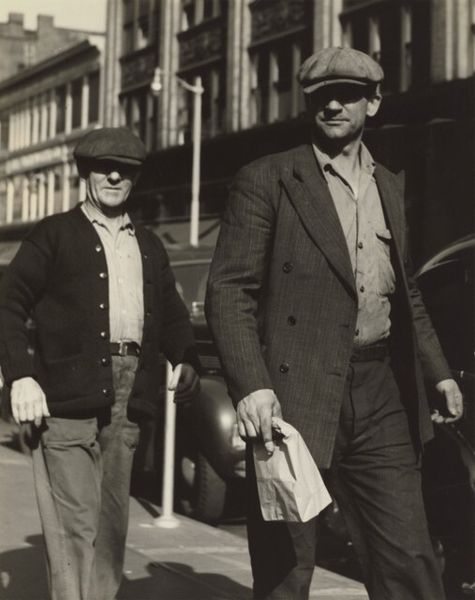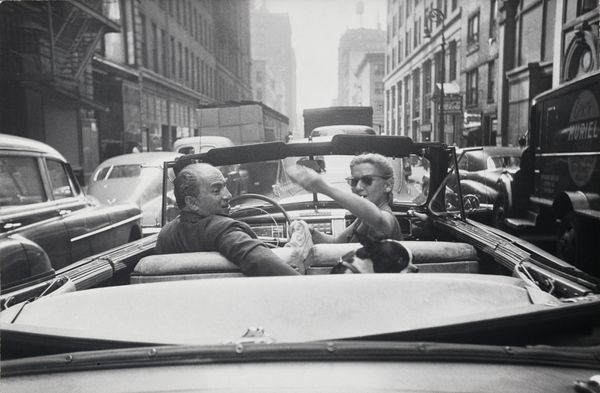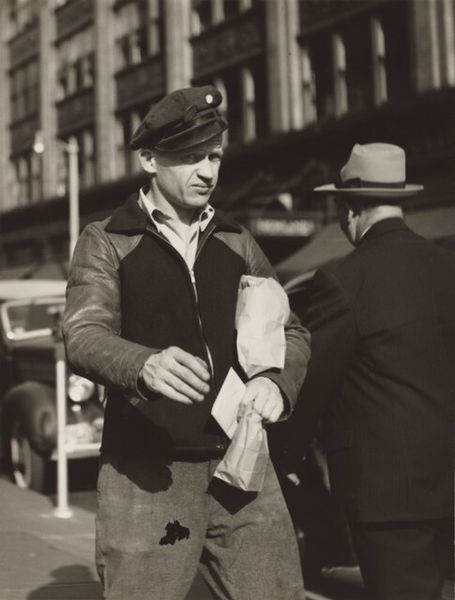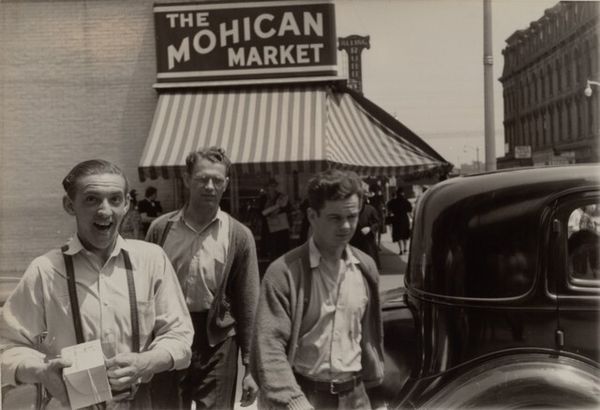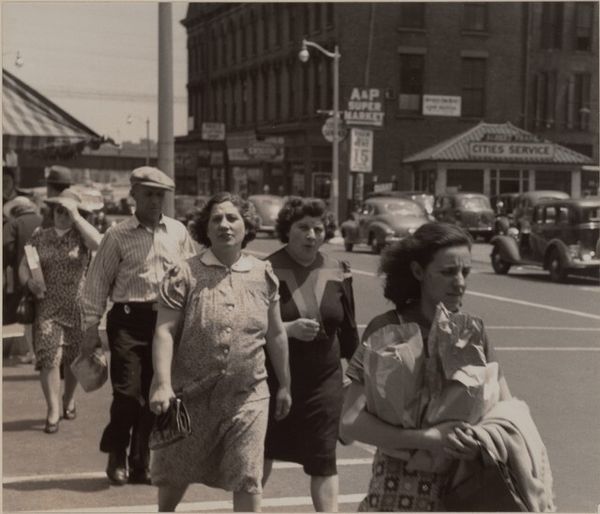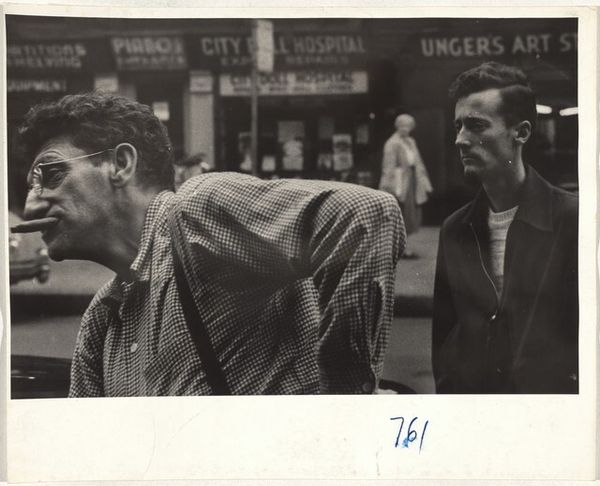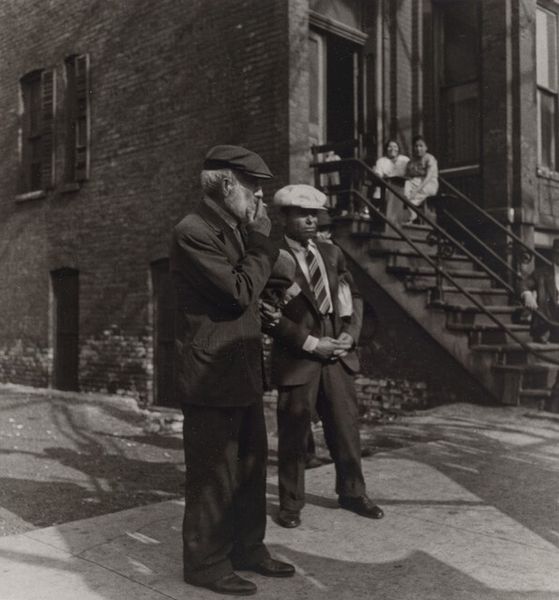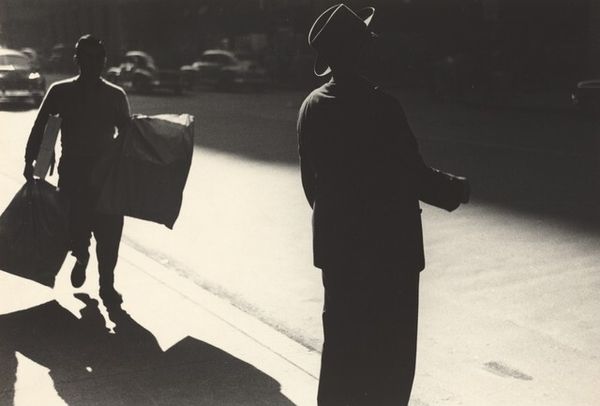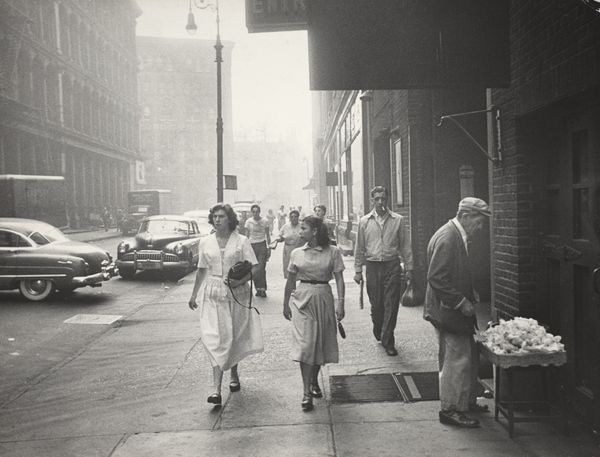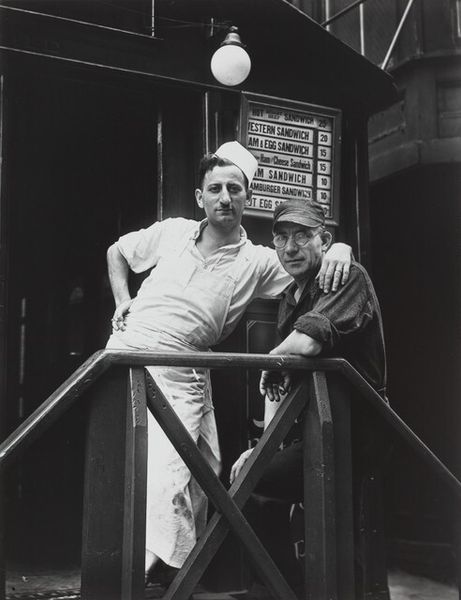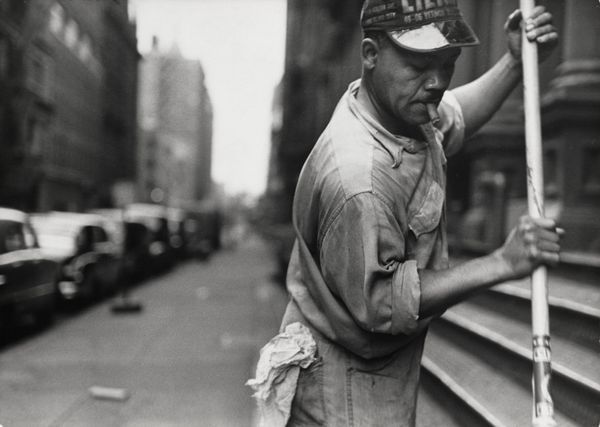
photography, gelatin-silver-print
#
portrait
#
outdoor photograph
#
archive photography
#
street-photography
#
photography
#
historical photography
#
gelatin-silver-print
#
monochrome photography
#
street photography
#
ashcan-school
#
cityscape
#
modernism
#
realism
#
monochrome
Dimensions: image (irregular): 22.4 × 17.4 cm (8 13/16 × 6 7/8 in.) sheet: 25.05 × 21.15 cm (9 7/8 × 8 5/16 in.)
Copyright: National Gallery of Art: CC0 1.0
Curator: Walker Evans’s gelatin-silver print, "Bridgeport, Connecticut," created in 1941, presents a stark image of two men crossing a city street. The work stands out in his oeuvre due to its intimate portrayal of working-class men during a crucial period in American history. Editor: My immediate impression is one of austerity and quiet resilience. The gray tones really amplify the everyday experience, almost elevating the mundane. The grain feels heavy, like soot. Curator: Absolutely. And this particular image invites questions about class, gendered expectations, and labor. How does the weight of the world impact these men’s identities? What pressures and constraints defined the experience of a working man in 1941? I think this photo can also open a rich and productive dialogue. Editor: I agree about the austerity. There’s a real lack of ornamentation here, nothing extraneous. Evans zeroes in on these individuals, drawing our attention to their clothes, the paper, their expressions, all elements contributing to the conditions that they have to live in. It really focuses the work on its materiality. Curator: Considering the time, too, this photograph speaks to a larger narrative, about what happened and about representation of men's experience, specifically regarding labor within capitalism. Their stoic expressions contrast with the potential economic hardship during this pre-war period. Editor: Right. There's something incredibly compelling about how Evans captured this specific moment, how he printed it using the gelatin-silver method – emphasizing the stark realism through the tonal range, and connecting us directly to the material realities of that time. We can think about the way he has depicted these workers to also suggest that each one of them produces an individual reality that makes them very particular. Curator: Thinking about our position in time today, and how those conditions affected not only that past generation, but affect us right now…I hope this photograph encourages folks to think more critically about the ongoing negotiations of identity in relation to labor and economy. Editor: This photograph of the men from Connecticut also emphasizes that no matter how far along a material object comes or the technology surrounding how it looks and feels comes, it should emphasize, now more than ever, labor.
Comments
No comments
Be the first to comment and join the conversation on the ultimate creative platform.
